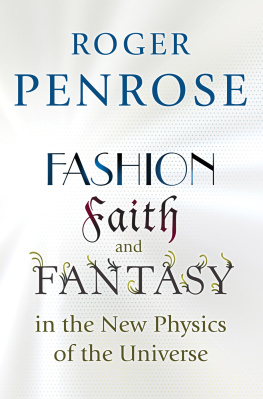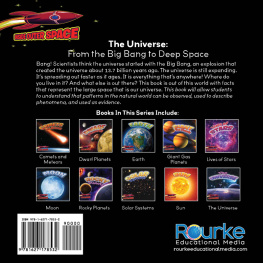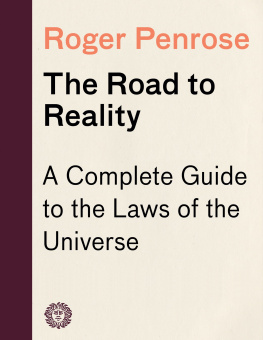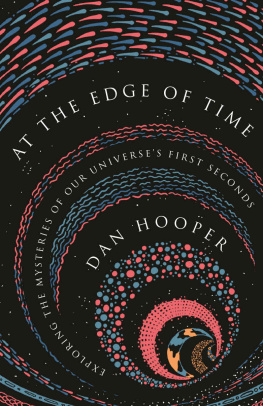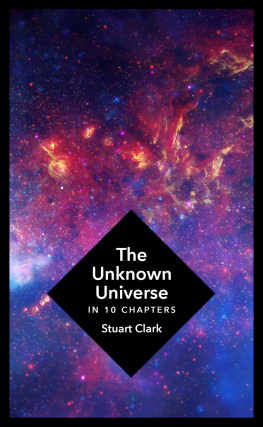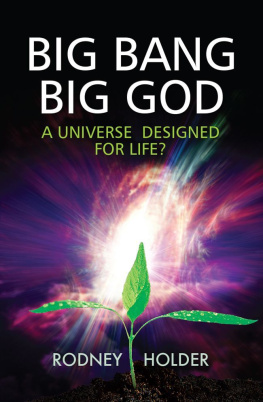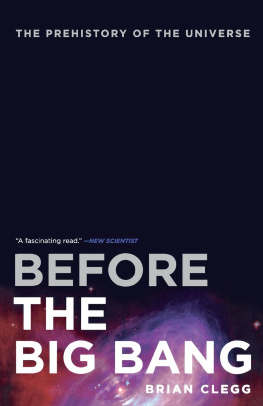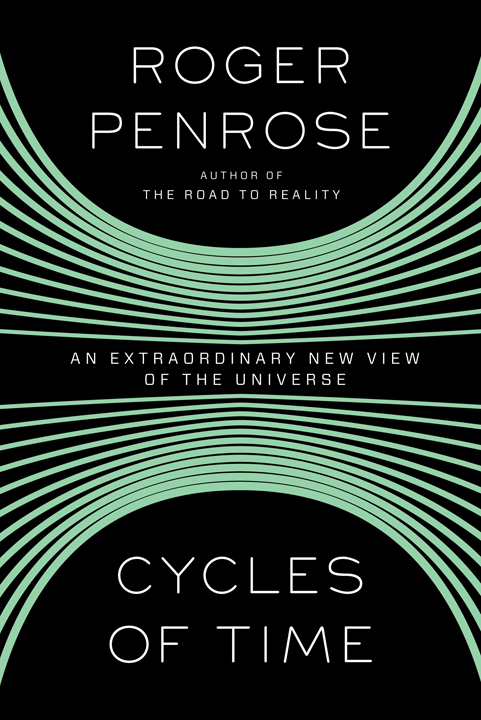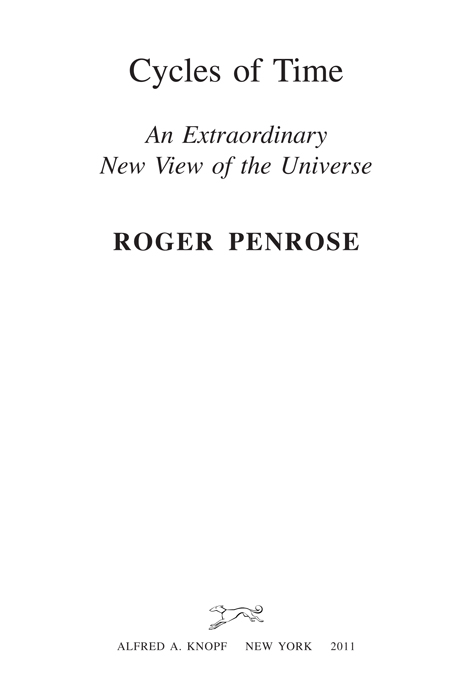THIS IS A BORZOI BOOK
PUBLISHED BY ALFRED A. KNOPF
Copyright 2010 by Roger Penrose
All rights reserved. Published in the United States by Alfred A. Knopf, a division of Random House, Inc., New York.
www.aaknopf.com
Knopf, Borzoi Books, and the colophon are registered trademarks of Random House, Inc.
Originally published in Great Britain by The Bodley Head, the Random House Group Ltd., London, in 2010.
Library of Congress Cataloging-in-Publication Data
Penrose, Roger.
Cycles of time : an extraordinary new view of the universe / Roger Penrose.1st U.S. ed.
p. cm.
Includes index.
eISBN: 978-0-307-59674-1
1. Cyclic universe theory (Cosmology) 2. Cosmology. I. Title.
QB991.C92P46 2011
523.1dc22 2011002731
v3.1
Contents
Preface
O NE of the deepest mysteries of our universe is the puzzle of whence it came.
When I entered Cambridge University as a mathematics graduate student, in the early 1950s, a fascinating cosmological theory was in the ascendant, known as the Dennis Sciama, from whom I learnt the thrill of so much new physics, was at that time a strong proponent of steady-state cosmology, and he impressed upon me the beauty and power of that remarkable scheme of things.
Yet this theory has not stood the test of time. About 10 years after I had first entered Cambridge, and had become well acquainted with the theory, Dennis Sciama publicly repudiated his earlier views and strongly supported the idea of the Big Bang origin to the universe from then on.
Since that time, cosmology has matured from a speculative pursuit into an exact science, and intense analysis of the CMBcoming from highly detailed data, generated by numerous superb experimentshas formed a major part of this revolution. However, many mysteries remain, and much speculation continues to be part of this endeavour. In this book, I provide descriptions not only of the main models of classical relativistic cosmology but also of various developments and puzzling issues that have arisen since then. Most particularly, there is a profound oddness underlying the Second Law of thermodynamics and the very nature of the Big Bang. In relation to this, I am putting forward a body of speculation of my own, which brings together many strands of different aspects of the universe we know.
My own unorthodox approach dates from the summer of 2005, though much of the detail is more recent. This account goes seriously into some of the geometry, but I have refrained from including, in the main body of the text, anything serious in the way of equations or other technicalities, all these being banished to the Appendices. The experts, only, are referred to those parts of the book. The scheme that I am now arguing for here is indeed unorthodox, yet it is based on geometrical and physical ideas which are very soundly based. Although something entirely different, this proposal turns out to have strong echoes of the old steady-state model!
I wonder what Dennis Sciama would have made of it.
Acknowledgements
I am very grateful to many friends and colleagues for their important inputs, and for sharing their thoughts with me relating to the cosmological scheme that I am putting forward here. Most importantly, detailed discussions with Paul Tod, concerning the formulation of his proposal for a conformal-extension version of the Weyl curvature hypothesis have been crucially influential, and many aspects of his analysis have proved vital to the detailed development of the equations of conformal cyclic cosmology, as I am putting them forward here. At the other end of things, Helmut Friedrichs powerful analysis of conformal infinity, particularly his work on the case where there is a positive cosmological constant, has lent a strong support to the mathematical viability of this scheme. Another who has contributed an important input over a great many years is Wolfgang Rindler, particularly for his seminal understanding of cosmological horizons, but also for his long collaboration with me on the 2-spinor formalism, and also for discussions on the role of inflationary cosmology.
Significant input has come from Florence Tsou (Tsou Sheung Tsun) and Chan Hong-Mo for sharing with me their ideas concerning the nature of mass in particle physics, and James Bjorken also provided a crucial insight in relation to this. Among the many others who have importantly influenced me are David Spergel, Amir Hajian, James Peebles, Mike Eastwood, Ed Speigel, Abhay Ashtekar, Neil Turok, Pedro Ferreira, Vahe Gurzadyan, Lee Smolin, Paul Steinhardt, Andrew Hodges, Lionel Mason, Engelbert Schucking, and Ted Newman. Richard Lawrences heroic editorial support has been invaluable, as has the vital input from Thomas Lawrence in providing much missing information, particularly concerning Part 1. Thanks are due to Paul Nash for indexing.
For her deep support, love and understanding, under frequently difficult circumstances, I am profoundly indebted to my wife Vanessa, whom I thank also for immediately providing some needed graphs at short notice, but more particularly for guiding me through some of the continual frustrations of modern electronic technology that would otherwise have completely defeated me with regard to the diagrams. Finally, our 10-year-old son Max is to be thanked not only for his continual encouragement and good cheer, but also for playing his own part in helping me through this bewildering technology.
I am grateful to the M.C. Escher Company, Holland, for permission to reprint the images used in . I give thanks, in addition, to NSF for support under PHY00-90091.
A Note on the eBook
Throughout this eBook many mathematical symbols are used. Due to the variable nature of eReaders, these symbols initially may not be aligned with the text. To help provide an optimal reading experience, please calibrate your font size so that these symbols and the text are approximately the same size. Using the sample below, adjust your font until the letter on the left is about the same size as the symbol on the right.
C ALIBRATION S AMPLE
D |
Prologue
W ITH his eyelids half closed, as the rain pelted down on him and the spray from the river stung his eyes, Tom peered into the swirling torrents as the water rushed down the mountainside. Wow, he said to his Aunt Priscilla, an astrophysics professor from the University of Cambridge, who had taken him to this wonderful old mill, preserved in excellent working order, is it always like this? No wonder all that old machinery can be kept buzzing around at such great speed.
I dont think its always this energetic, said Priscilla, standing next to him behind the railing at the side of the river, and raising her voice somewhat, so as to be heard over the noise of the rushing water. The waters much more violent than usual, today, because of all this wet weather. You can see down there that a good portion of the water has had to be diverted away from the mill. Usually they would not do this, because they would have to make the most of a much more sedate flow. But now theres far more energy in the flow than is needed for the mill.
Tom stared for some minutes into the wildly tumbling water and admired the patterns it made as it was flung into the air in sprays and convoluted surfaces. I can see theres a lot of power in that water, and I know that a couple of centuries ago the people were clever enough to see how all this energy could be used to drive these machinesdoing the work of many human beings and making all that great woolen cloth. But where did the energy come from that got all that water high up on the mountain in the first place?


